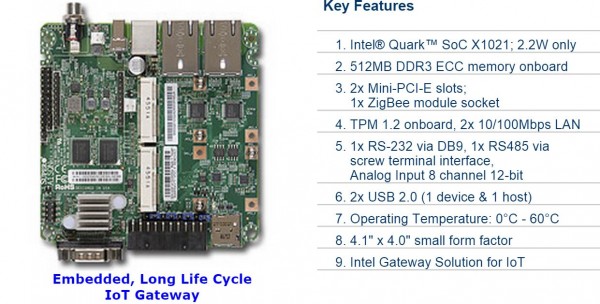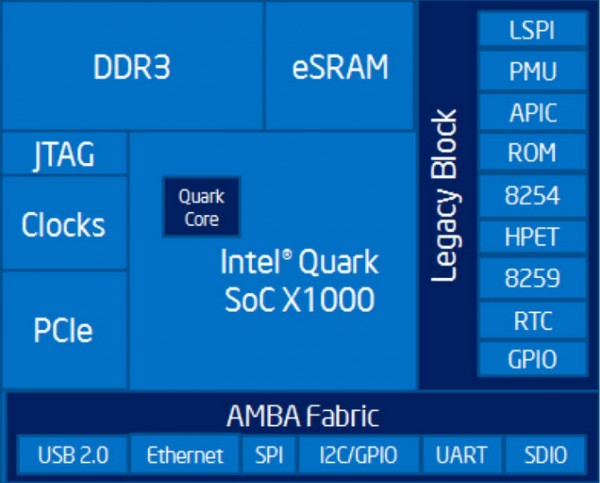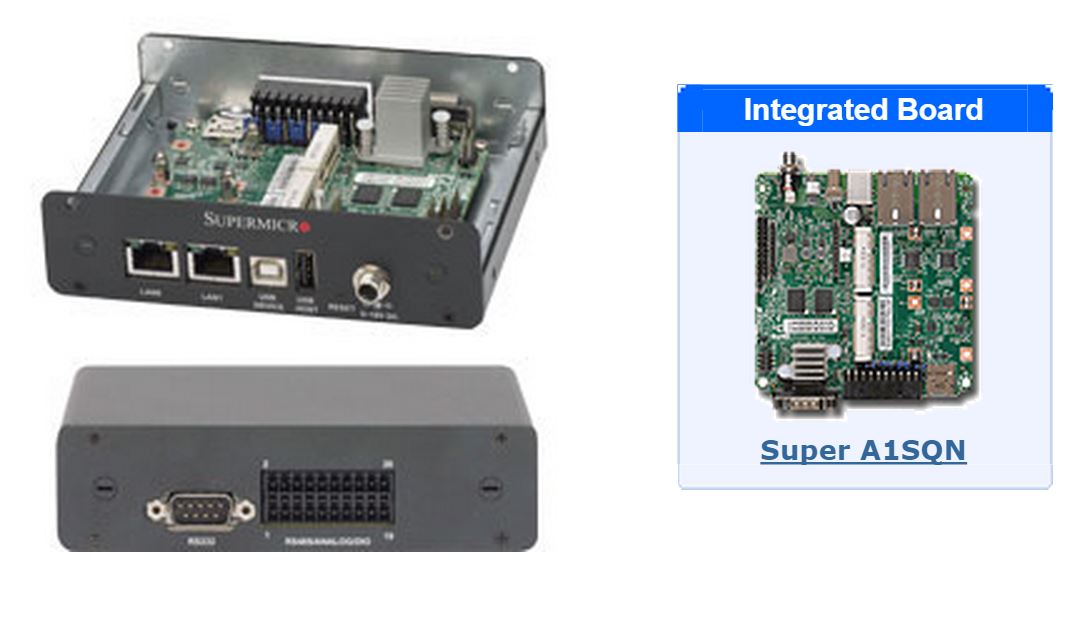Supermicro announced its new Internet of Things Gateway System with Intel Quark X1000 (X1021 to be exact) SoC. The Internet of Things, wearables, smart homes and factories are all buzzwords that are increasingly prevalent in today’s technology press, and for good reason. Wearables are becoming commonplace, appliances and home hardware are (finally) becoming “smart” and automation is everywhere. A common hurdle when setting up these systems is taking signals from the smart device and getting that information back to common Ethernet and wired networks. Intel and Supermicro are looking to build a class of appliances that can act as gateways for these types of applications.
Supermicro’s answer: the Quark based SYS-E100-8Q
Looking at Supermicro’s SYS-E100-8Q one can see that this is a system focused on low power with a TDP of 2.2w. The E100 system utilizes a small enclosure and a A1SQN motherboard. The embedded SoC’s dual LAN functionality for dual 100mbps LAN. Unlike some competitive offerings, the Quark X1000 based SoC can handle PCIe so there are two mPCIe slots and a Zigbee interface. The total package also comes with 512MB DDR3 (single channel) installed to feed the single core 400MHz processor.

Supermicro uses the Intel X1021 SoC which is rated for extended temperature (-40C to 85C) operation but the entire system is rated for 0C to 50C temperatures. That is important as many of these devices are likely to be installed in various non-datacenter locations.
For reference, here is the Intel Quark X1000 SoC block diagram:

Overall, a simple block diagram compared to newer Intel architectures but these chips are targeted at low cost and low power applications where having a 32-bit instruction set is not a major roadblock. At the same time, these chips are likely much faster than the first generation Pentium Pro chips from the late 1990’s, only at a fraction of the size, cost and power consumption.





Not getting any warm and fuzzy feeling here sorry. looking way small and under-powered thus only competing against smaller pre-built firewall/routers. Lack of ports too.
If only it had gigabit rather than 10/100. Would be just about perfect for use as a router :(
Interest level here would depend on pricing. If it was reasonably priced, I could see it getting a fair bit of use (home automation gateway comes to mind – where stability trumps outright power), but only if it was reasonably priced. However, this is most likely aimed at the commercial space, so pricing at the one or two unit level may be quite high.
The most important factor I see here is the ECC ram support and the processor being X86 compatible. I seem to recall the documentation saying it is a 64bit processor though I may be wrong.
This is the only product on the market right now that provides ECC protection with a total power consumption in a range that is reasonable for an appliance. Two things that are required for IoT products. Anytime you have a computer that is running 24/7 for extended periods of time and where you need stability and accuracy ECC is a requirement.